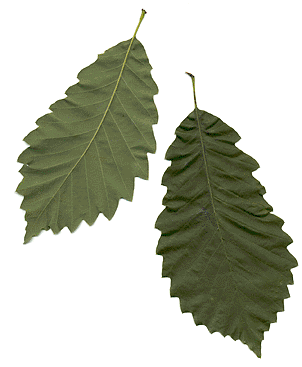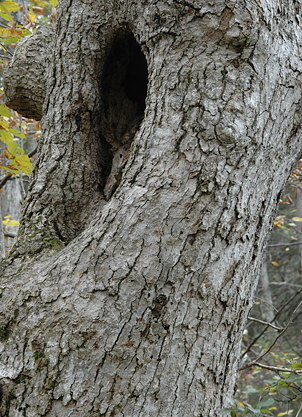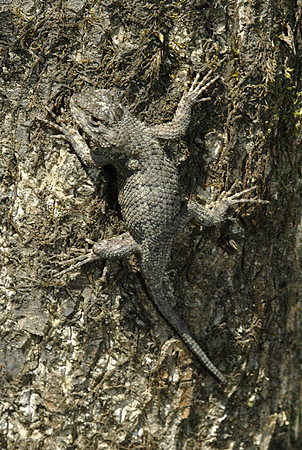| |
|
| |
 |
| |
Chinquapin Oak Leaf |
Identification:
The leaves
are simple,
alternate, paler and
downy below and 4 inches to 6 inches
in length. The margin of the leaves has large teeth that
are tipped with glands (but not bristles).
| |
|
 |
|
|
Chinquapin Oak Bark |
The bark of the Chinquapin Oak is
ashy-gray with shallow fissures. The bark breaks into large
flaky scales on older trees.
The twigs of the Chinquapin Oak can
vary from yellowish to reddish to straw-brown in color.
The twigs are slender, smooth and
lenticellate.
Other Uses
and Lore:
Native Americans
ground the acorns into flour for cooking. Pioneers used the
very heavy and durable wood for all types of construction, including
split rail fences. Railroads used the wood for railroad ties,
and much timber was used for bridge planking. Cavities like
the one seen in this tree are used for shelter by many woodland
creatures, including owls like the Barred Owl.
The
Trail From Station Six to Station Seven
 |
| Eastern Fence
Lizard |
On warm summer
days watch for reptiles like this Eastern Fence Lizard on the sides
of the trail and on woody debris along the trail. The throat
of the males is bright blue during the breeding season.
Station Seven will be on the right side of the trail.
|

